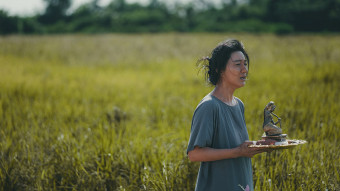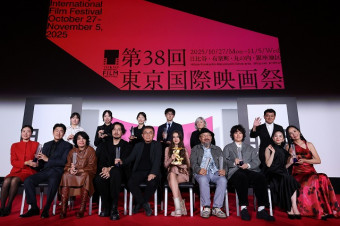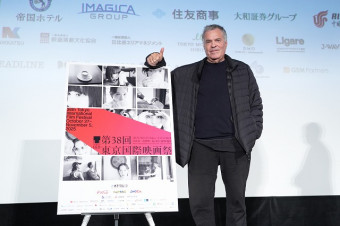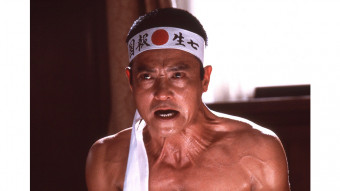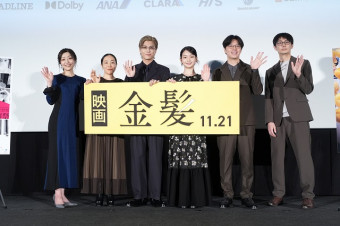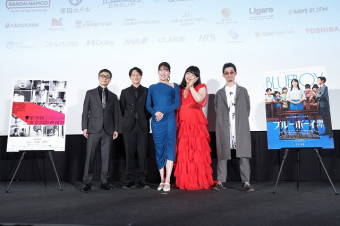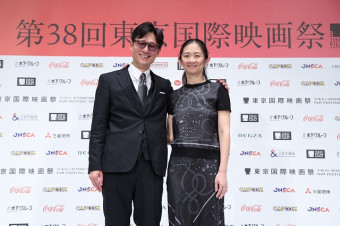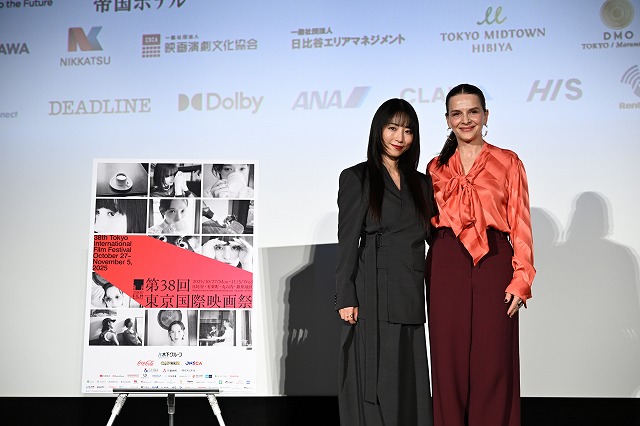
When the esteemed French actor Juliette Binoche took to the stage for a Q&A session following the screening of her directorial debut, In-I in Motion, she expressed the hope that, rather than just answering questions about the film, the questions themselves would teach her something new about the movie. “So let’s rock and roll,” she told the crowd.
Binoche had presented the film on October 28 in the Special Screenings section of the 38th Tokyo International Film Festival. And in a very literal sense, rocking and rolling is what it’s all about. A documentary that covers the process of creating the dance/performance theater piece In-I, which toured the world starting in 2007, In-I In Motion is extremely physical, even if much of the discussion that takes place in the film is about expressing emotions in an honest and visceral way.
As Binoche told the audience, the process started with a massage from the dancer/physical therapist Su-man Hsu.
“I was shooting a film in London,” she recalled,“ and Hsu, who was the trainer and rehearsal director, gave me shiatsu, and at the end she asked me if I wanted to dance, and I said yes.” Binoche admitted that she wasn’t much of a dancer, but the experience made her want to explore dance more. So Hsu suggested she saw a production called Zero Degree, which was directed by dancer Akram Khan. A collaboration was proposed and two years later the two started working on In-I.
As the film points out in the beginning, the kernel of the project came from Khan teaching Binoche about dance as Binoche taught Khan about acting. The production was so successful that when they took it to the Brooklyn Academy of Music in New York, Robert Redford saw it and later convinced Binoche to make a film about it. As it happened, Binoche had videotaped almost all the rehearsals.
“We had 170 hours of rushes,” she said. “I didn’t have a script, so I had to write a narrative while I was editing—I had no through line for the film.” What provided a structure was sound.“ I found how you could link scenes with sound. It really opened my mind.”
Programming Director Ichiyama Shozo, acting as moderator, then introduced the single-monikered Japanese actor-producer MEGUMI, who acted as associate producer of In-I In Motion. She and Binoche had met at the Cannes Film Festival, when MEGUMI launched the first Japan Night event, she explained, and she helped her bring the film to fruition.
But it’s Hsu whom Binoche credits with sparking the idea. “Su-man knew from her own experience how I could benefit from learning dance,” she said. “She herself became a dancer relatively late, at 17. I was 42 years old at the time, and she saw my potential.”
Hsu appears often in the film, providing movement advice during the process of transforming the “story” into a dance piece. The movie also shows the input of acting coach Susan Batson, who barks instructions as Binoche and Khan improvise while exploring various traumatic episodes embedded in their memories. The result is often startling. In the beginning, the dancing looks more like groping, as the two performers act out their aggressions in line with Batson’s direction.
“It’s why I asked Susan to participate,” said Binoche. “She believes that acting starts from sensation—movement has to be related to something real, something felt. For many artists, it might come from the head, from the intellect, but for me it has to come from within. And this was revealed as we kept going. Movement is not thought, it comes from a place that’s invisible and truthful. And that’s difficult because we’re taught to think through everything.”
For the first hour of the film, some of the action is unsettling, since it essentially conveys violent feelings removed from the context of a story. But once Binoche and Khan start dredging up their own memories and verbalizing them, the violence makes sense. The source of Khan’s anguish was his father, whom he believes “betrayed” him to an oppressive mullah at the mosque he attended as a small boy. For Binoche, it was the question of whether it’s possible to “sustain a relationship over time,” inspired by an incident when a lover accused her of cheating and then started kicking her front door in a violent outburst.
The production itself, performed in front of an audience, is moving. Binoche’s dancing is impressive, and Khan’s inexplicably raw expressions of the fear and loathing make a lasting impression.
“After I did the movie Blue,” said Binoche, referring to Polish director Krzysztof Kieślowski’s Three Colors: Blue (1993),“I got so many scripts about someone dying, but I didn’t want to do that. I wanted to jump into something riskier. It’s what we’re here for. We make mistakes. You must be allowed to make mistakes. That’s art.”
Q&A Session: Competition
In-I in Motion
Guest : Juliette Binoche (Director), MEGUMI (Associate Producer)




























